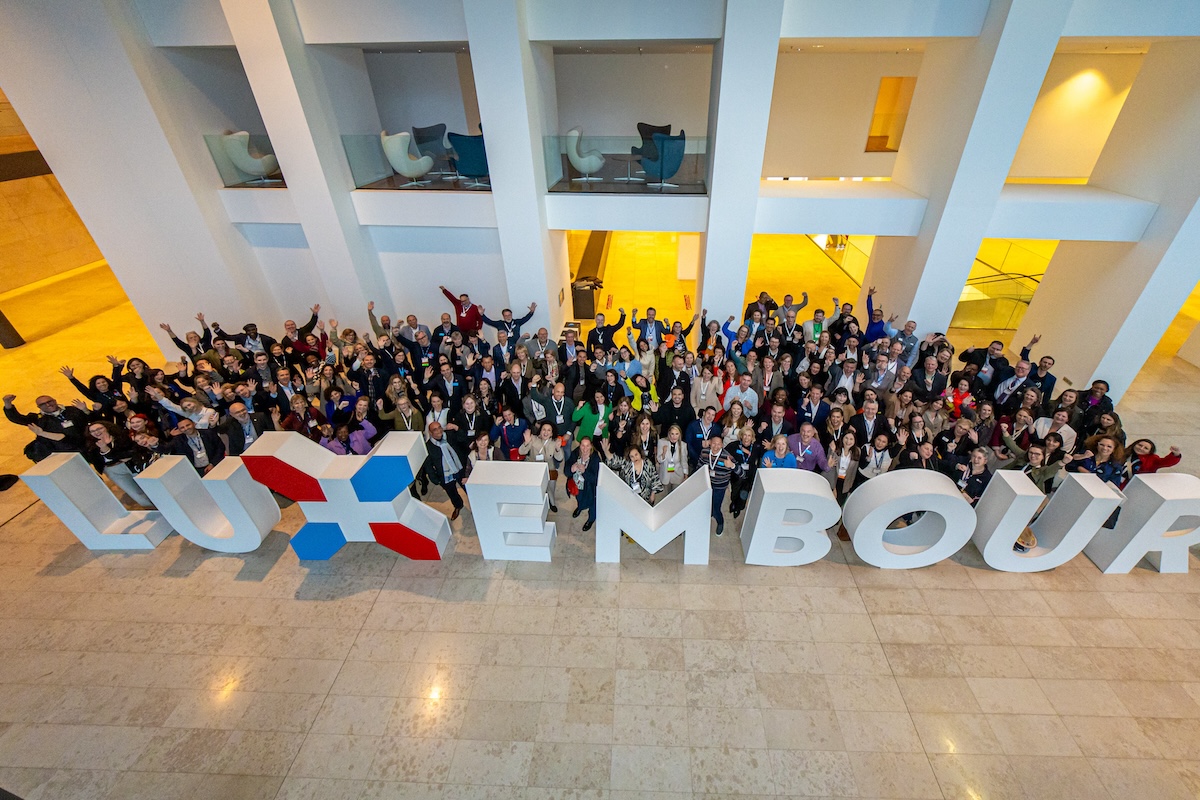Events, in general, use a considerable amount of an organization’s marketing budget and resources. Ask any event planner for their event checklist — you will see that the amount of time invested in an event can be staggering, like planning the logistics, driving attendance and registration, staffing, and following up with stakeholders. Because of this, events must run efficiently while producing valuable and connection-focused experiences that deliver on event ROI, such as creating long-term customers.
While it may sometimes seem like a nice-to-have with all these extra priorities to juggle, event engagement is an essential element to get right. To achieve the best results, planners need to craft an effective engagement plan of action, as engagement is one of the key drivers behind favorable event outcomes.
However, we should be cautious in adopting a one-size-fits-all approach regarding virtual, in-person, and hybrid event engagement strategies.
An effective event engagement strategy requires us to consider the foundation of our plan and the specific challenges of each format while also addressing the needs of different audiences and stakeholders. For example, the connection between attendees and exhibitors will differ from the interaction between speakers and attendees.
An effective engagement strategy helps attendees connect with event hosts and sponsors, their brands, partners, presenters, purpose, and others attending — it is the momentum that drives people to immerse themselves in the overall experience. It is not just about keeping an attendee’s attention but also about channeling it in the right direction with the help of event tech.
By focusing on the specific value different event formats and audiences can produce to create a stellar event strategy, planners can easily navigate the challenges while making the most of the ongoing opportunities attendee engagement provides.
Creating your event engagement strategy
Consider the pros and cons of digital engagement
Virtual event formats have many advantages, like saving time and eliminating travel costs. But what about the areas where virtual and hybrid events fall short?
The collective voice of industry professionals from around the globe shares the same sentiment — virtual event engagement remains one of the top challenges.
When creating your strategy, here are some of the main components that could affect engagement and that planners should consider when aiming to minimize the potential risks of virtual events:
Attendee attention span: The average attention span of a human being is roughly 18 minutes. Add reduced mobility and staring at a screen for extended periods, and planners can then understand why virtual event engagement is challenging at times.
Virtual fatigue: With large portions of work pivoting to remote working formats, attendees are most likely spending a lot of their time in front of a screen engaging with colleagues and clients — and it can be exhausting. This phenomenon is known as “Zoom gloom” or virtual fatigue.
Sensory deprivation: Human beings rely on their senses to have a fully immersive experience. Without our ability to touch, taste, or smell aspects of an event, we can unintentionally disengage with what we are seeing in front of us from a learning perspective.
Connectivity/tech issues: Technology can be unpredictable and intimidating, and it’s vital to provide attendees with intuitive tools for engaging with your event. While it may seem obvious, attendees can’t engage if they don’t know how to navigate your software.
Map the attendee journey
Any event engagement strategy begins by looking at the overall event goals and objectives. Virtual and hybrid event formats may involve different tools for attendee engagement, but the fundamental principles behind successful in-person events still apply.
DEFINE YOUR EVENT OBJECTIVES AND STORY
Great events begin with clear objectives that intersect with target audiences and their needs. To conduct the highest ROI events, start with some simple questions:
- Who is your target market?
- What are their interests?
- Where and how do they prefer to connect?
- How do you want people to feel when they attend your event?
- What story are you telling?
- What outcomes do you want to achieve?
- What data will you need to collect to measure engagement success and ROI?
For example, if your event objective is educational, an effective engagement activity may use live polling to quiz attendees on their knowledge. Interactive exercises help attendees to stay focused and retain information, and since live polling allows for anonymous answers, no one has to worry about the risk of personal embarrassment over a wrong answer.
If, on the other hand, your objective is brand awareness, it can be effective to tell a story and ask the audience to share similar anecdotes in the chat. This tactic will help to generate a sense of personal connection with your brand — and kickstart conversations between your attendees, in turn helping to foster a brand community.
The aim of any event engagement strategy should be to turn attendees from passive to active participants. If event attendees remain uninvolved, you risk losing valuable opportunities for them to interact and connect. While virtual events may not provide the engagement opportunities that come with the fully immersive environment of an in-person event, digital tools do offer other ways to encourage an active dialogue.
Select technology and vendors or partners that support your needs
Even simple events have many moving parts. Clarifying your event technology needs is crucial to ensuring that your event runs smoothly and event engagement remains on-point, including identifying the optimal mix of online platforms, apps, and tools.
By selecting effective integrated, end-to-end event technology, planners can streamline the process, which is ultimately the first step in driving attendee engagement. When the event technology creates friction, attendees disengage. Certain, an all-in-one event technology provider, suggests planners use a platform that addresses all event needs, regardless of format (virtual, in-person, or hybrid).
Here are some questions you should ask and things you should consider when selecting an event tech partner to increase engagement:
CAN YOUR EVENT TECH OFFER CONSISTENT COMMUNICATION AND BRANDING?
Ensure that all event communications remain consistent throughout your event and reflect your brand through familiar, easy-to-use templates with the option of setting up multiple events to save resources. This type of set-up allows an attendee to become accustomed to an event platform and engage easier.
WILL YOUR EVENT TECH ALLOW FOR SEAMLESS INTEGRATION?
Your event tech must integrate with other apps and tools while allowing for information to “flow” in an uninterrupted manner that is easily accessible. This structure helps avoid tech glitches and lags that may result in attendee drop-off.
DOES YOUR EVENT TECH ENHANCE THE EVENT EXPERIENCE?
For the best attendee experience, planners should apply past preferences and recommend appropriate content. A great set of speaker bios and nicely formatted session descriptions will also make a difference. Further, an interactive event app can help attendees find their way around while engaging via polls, connecting with others, and participating in Q&As.
Structure your event
Pre, during, and post event interaction is a fundamental consideration when creating your event engagement strategy and includes things like pre-event communications, social media campaigns, and live question and answer sessions.
But to have effective engagement, planners should structure their chosen techniques appropriately.
INTERACTIVITY IS KEY
By bringing event attendees into the conversation from the beginning, you shift from superficial engagement to authentic interaction and connection. Ideal event times and session lengths for online and hybrid formats differ from in-person events due to attendee attention span and environment. Online events should be shorter than most in-person events, with the general rule of thumb suggesting no longer than two to four hours unless you are looking at breaking your event up over a couple of days.
TAILOR EACH EVENT/SESSION TO THE AUDIENCE
When topics are generalized, less engagement and interest take place — this is where it helps to know your target market. By dividing each session or webinar into a specific target audience (based on role, industry/vertical, etc.), planners can deliver an informative and engaging experience for attendees that caters to their areas of interest.
GET CREATIVE AND HAVE FUN.
Event planners are known for their creativity and ability to innovate. Some great examples of innovation are various gamification tools designed for events. Most importantly, push the envelope and have fun while you are doing it. Check out this blog if you’re looking for additional ideas on engaging attendees at in-person events using apps.
Build meaningful connections
Attendee engagement is multi-dimensional, with engagement strategies needing to vary between different event stakeholders. What may work for attendees connecting with one another will not necessarily work for exhibitor and attendee engagement.
Taking advantage of each type of connection requires an understanding of how each works. With this information, we can customize the technology and manage communication to achieve maximum benefit.
CONNECT ATTENDEES WITH ONE ANOTHER
One of the main reasons people attend events is to network. Without the face-to-face contact of live events, virtual attendee-to-attendee engagement remains one of the main pain points for event planners.
Networking allows attendees to connect with others, learn from their peers, and grow their global network. Creating a strategy aimed at this type of engagement has many benefits for attendees and planners alike.
The advantages of networking are an easy sell, so communications regarding this aspect should focus on how your chosen event tech can help. For example, providing attendees with valuable and searchable information about fellow attendees is powerful.
In addition, offering attendees the choice of how they can meet highlights the inherent benefits of hybrid events, which include virtual attendees interacting with in-person audiences on the same event platform.
Examples of attendee-to-attendee connections include pre-event discussion boards, 1:1 meetings, and interactive social media campaigns.
CONNECT ATTENDEES WITH EXHIBITORS
Gaining access to exhibitors that attendees wish to engage with provides a better event experience. If attendees participate in an online event to access potential suppliers, ensuring smooth engagement will help facilitate this need.
Virtual booths get a bad rap, but it does not need to be this way. A great way to showcase the list of exhibitors and build hype is by sending out pre-event communications like exhibitor profiles and specials to let attendees know who will be exhibiting on the event day.
Planners can encourage attendees to visit exhibitors through engagement tools, apps, discussion boards. They can also encourage exhibitors to make their virtual booths visually appealing and interactive, with event-specific specials and demos.
CONNECT ATTENDEES WITH SPEAKERS
Often attendees wish to engage with event speakers to gain further understanding of topics relevant to them. Having the opportunity to connect with speakers via a virtual booth, 1:1 meetings, or live Q and A session gives people added value that will keep them coming back to your events.
The less interaction people have with your event content and speakers, the less they will remember and learn from your event — take your attendees off mute. Collective conversations involve attendees by speaking with them instead of at them and make them active participants in session dialogues outside of just the Q and A or polls.
CONNECT AS APPROPRIATE FOR EACH EVENT FORMAT (VIRTUAL, HYBRID, IN-PERSON)
Your connection strategy should always take into consideration the various types of engagement audiences may need. While a 15-minute break may work for in-person, virtual attendees sitting in front of a screen for 15-minutes has a very different feel — incorporating this aspect into your event strategy helps all attendees become active and engaged participants in your event.
Consider having breaks and activities designed for virtual or in-person attendees separately, and make sure to have a designated event host for each event platform. Otherwise, you risk catering to only one set of your audience’s needs.
Planners should also integrate event technology and tools to support virtual and in-person attendees, speakers, and exhibitor engagement by using tech that supports this type of functionality.
CONNECT THROUGH POLLS, SURVEYS, DISCUSSION BOARDS, AND PREFERENCES
When creating an event strategy, planners need to design a variety of options to suit the needs of different audiences — what may work for one type of event attendee will not necessarily work for another.
The successful use of polls, surveys, and discussion boards, coupled with an assortment of topics and breakout rooms, will keep event participants engaged.
You can find examples of this throughout the online event experience #EVENTS360, a 3-day event and an ongoing virtual event series organized by Certain. #EVENTS360 implemented badges and leaderboards with a high-value incentive to drive engagement within the event. Further, event stakeholders used surveys, live polling, discussion boards, interactive Q&A, and a photo and video feed to increase interaction.
Measuring your success
While engaging with your audience will require a solid event strategy, collecting data to measure event ROI is relatively easy with the right event technology — something to include in your engagement strategy.
Examples of KPIs that measure attendee engagement include live polls, surveys, gamification, and networking tools. Networking metrics, for example, can be measured through things like the number of direct messages sent between attendees or the volume of meetings booked with exhibitors on the platform. By having access to real-time data, organizers and speakers can respond to people and directly address the needs, interests, and questions expressed throughout the event series.
Businesses can then utilize insights to measure event success and inform future event and marketing decisions while building relationships.
When hosting #EVENTS360, Certain captured engagement data from the event website, registration, agenda, and speaker session catalogs. The data gave insights into how individuals engaged with the program and content, allowing the tech provider to make informed and strategic decisions while interacting with each attendee. Through this, Certain built stronger relationships with many target prospects, resulting in a significant pipeline influence and lead conversion.
CONCLUSION
Successful events begin with a great understanding of the goals, the target audience, and the type of engagement that will provide the best result for everyone. Now, more than ever, a fundamental aspect to include in your event planning process are strategies incorporating creative ideas, innovative tools, and technology that moves participants into a comfortable and engaged frame of mind. Without an intentional event engagement strategy, planners risk losing an essential part of any event — people connecting and interacting with your brand and story.






